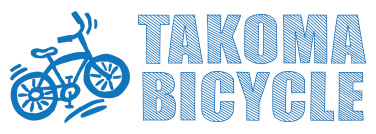
Basic Types of Trainers
Wind Trainers
One of the original trainer styles, on a wind trainer pedaling powers a fan that provides resistance. Resistance increases as the rear wheel spins more quickly—either because you’ve increased your pedaling speed or are using a bigger gear. Pros: Wind trainers are among the least expensive trainers around; they're very simple and durable. Cons: This is the noisiest style of trainer; its resistance level cannot be adjusted; it's often limited in terms of features; and it doesn’t simulate the feel of the road very well.Magnetic
Instead of a fan, a magnetic trainer uses a magnetic flywheel to provide resistance. Pros: There are many affordable options; resistance can be adjusted; they're much quieter than wind trainers; and there are many options. Cons: Their resistance range is limited, and they aren't as durable as other trainers.Fluid
Fluid trainers are a type of magnetic trainer (they're based on a magnetic flywheel) but a fluid trainer adds chambers of viscous fluid to add a greater range of resistance options. This is the most common type of trainer available today. Pros: They have the most accurate "road feel" of any style of trainer; fluid offers a wide range of adjustable resistance (electronically controlled on nicer models); they're very quiet; and they have a wide variety of features and options (like power and connectivity)?. Cons: The durability of fluid trainers is improving every year, but they're susceptible to overheating and cooking the fluid.Rollers
Rollers are the originial indoor trainer style; the bike sits freely on three precision drums inside a frame, which turn as you pedal. Resistance can be provided by the rollers themselves (smaller-diameter drums provide more resistance) or via magnetic, fluid or wind add-on elements.? Pros: Elite cyclists swear by them for some workouts, and they're useful for improving your form.? Cons: Resistance range is somewhat limited, and they take some practice to get used to so you don't slide off.Trainer Options to Think About
Do you need a power meter?
You can now add power tracking to many trainers. Sometimes this is dedicated to the trainer with its own head unit, or it can be part of a "smart" trainer. If you don't already have a power meter on your bike, it may make more sense to add one that can also be used outside - this is an often expensive feature.Do you want connectivity?
A smart trainer is different than a model with electronically controlled resistance. "Smart" means the trainer can communicate to other devices to download a training program to, say, a phone-based app that automatically adjusts resistance, or syncs to online training platforms like Zwift. This is a premium feature and can significantly increase the price of a trainer, but if you're looking for lots of variety, it may be worth the cost. Some third-party training platforms support non-connected trainers, but you'll need extras, like an external "speed" sensor, and possibly a power meter as well.Do you want an articulating attachment?
A few trainers pivot on an articulating base. That means you can stand up and pedal while leaning the bike side to side just as you do on the road. This may be able to help in maintaining core strength, but an indoor trainer probably isn't the place to start for a core workout. However, this feature does lead to a more genuine "road feel."Do you want direct-to-frame attachment?
Some stationary trainers offer a direct attachment to the rear dropouts; the trainer replaces the bike's rear wheel. This provides a more efficient connection between the bike and the trainer because it doesn't rely on tire friction to produce resistance. This also saves tire life (trainers are very hard on tires). However, direct-attachment trainers may not work with all drivetrains or axle standards.Which Trainer Is Right for You?
Even within these four categories, there's a wide range of options. Magnetic and fluid trainers go from fairly simple models with a handlebar-mounted remote to vary the resistance, all the way up to ANT+ enabled versions that pair to your computer, track power, and offer downloadable workouts. Here's how to pick:
If: you just need a basic model for pre-race warmups Consider: a wind trainer or simple magnetic model with folding legs for easy portability
If: you want to work on your pedal stroke Consider: rollers—there's no better tool to smooth out a clunky cadence
If: you need to do structured workouts Consider: a fluid trainer that tracks power output, or a smart trainer that pairs to your computer head unit
If: you get bored easily Consider: a smart trainer that can interface with independent training programs
There’s an App For That
One of the biggest advances in indoor training over the past few years has been the wide variety of training program options. There are at least a dozen companies—including Zwift, BKool, The Sufferfest, Kinetic, and Wahoo—offering indoor training solutions. Some are apps (iOS or Android); some are computer-based. Some are one-time purchases, and some are subscriptions or pay-per-plan programs.Other Things to Consider When Buying a Trainer
Compatibility
With axle attachment standards and widths changing almost yearly, check whether a trainer you're interested in offers different attachment options such as thru-axle adaptors and, for direct-attachment trainers, different freehub options.Storage
Look for folding legs for easier storage (some rollers fold in half as well). Easier storage can add modest amounts to the cost.Noise
All trainers make noise, and produce vibrations that may be annoying to others around you. If you live in a building with shared walls or floor/ceilings, pay particular attention to how much noise and vibration a trainer produces.Stability
If you're going cross-eyed trying to beat your PR on a workout, a trainer crash could happen. Follow this rule of thumb - the broader the base, the more stable. Some trainers even have a leveling feature for uneven surfaces.Accessories
There are all kinds of accessories for trainers - ranging from the essential to the...not so essential (a storage bag!). However, here are a few you may want to consider, most important first:
Axle attachment inserts: Make sure the trainer you're buying has compatible options for the bike or bikes you want to use.
Front wheel block: A dedicated leveling block provides needed stability, and is typically not very expensive.
Sensors: You can buy a basic unit now and upgrade it later with sensors for things like power, cadence, or even virtual speed.
Floor mat: It protects your floor from scratches and sweat, and absorbs a bit of vibration—useful for nice floors and apartments.
Trainer tire: Trainers are much harder on tires than road miles. If you have high-end tires and are riding inside most of the winter, consider a trainer-specific tire, which has a beefier casing and tread. They're typically not recommended for outdoor use. Another option: Install an inexpensive heavy-duty training clincher on a spare rear wheel.
Save SaveSave


